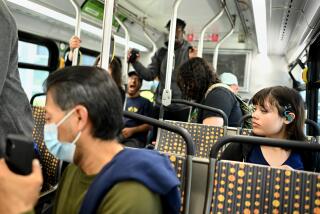Affordable cars are key to getting off public aid, study finds
Access to affordable cars proved a crucial leg-up for working families, even during the depths of the worst recession in decades, a new study has found.
The survey of 445 recipients of loans offered from 2007 to 2010 by the nation’s largest low-income car ownership program, Ways to Work, found that 82% were able to get off welfare and other public aid as a result. That led to an estimated savings to taxpayers of $18.2 million a year, more than double the amount donated to the group.
Participants reported increased incomes, wages, educational levels and access to traditional financial services, such as bank accounts.
The survey — conducted by consulting group ICF International Inc. — was commissioned by the nonprofit Ways to Work, which has 55 offices in 23 states. It offers auto loans, usually at 8% interest, to working families with bad credit scores and low income levels, and gets a substantial majority of its funding from private sources. In 2011, it issued $5.8 million in loans.
Ways to Work and other low-income car ownership programs offer an alternative to used-car dealerships known as Buy Here Pay Here lots that cater to people with credit problems. Those lots, which provide in-house financing, typically charge 18% to 30% interest on their auto loans, and aggressively repossess cars.
Default rates in the Buy Here Pay Here industry hover around 25%; by comparison, fewer than 12% of Ways to Work loans are not repaid.
Owning a car is key to economic mobility in this country, particularly considering the reductions in funding for public transit in recent years. But with very few low-income car ownership programs nationwide — and in some areas including Southern California, none at all — many working families have no option except Buy Here Pay Here dealers.
“This is something that deserves to be in all 50 states because it pays back far more than is put in,” said Jeff Faulkner, president of Ways to Work. The study found that taxpayers saved $2.50 for every dollar invested in the program.
Particularly telling, Faulkner said, was the relative strength of the outcomes despite the dire economic state of the country.
A previous survey of Ways to Work participants that focused on loans issued from 2003 to 2005 found that 87% of respondents said they were able to get off public assistance after receiving car loans. Although that’s slightly higher than reported in the new survey, it also came at a time when unemployment was far lower and the economy was growing sharply.
In 2010 and 2011, Ways to Work added 26 locations nationwide and this year plans to add 12 more. Most recently, it announced plans to begin offering loans in the Detroit area, and the group is looking to expand into San Diego, Los Angeles and Santa Barbara.
To qualify for a loan, recipients must meet an income test and take a financial literacy course. Any car they buy must pass an independent inspection. To date, Ways to Work has issued 32,000 loans worth $63 million.
More to Read
Inside the business of entertainment
The Wide Shot brings you news, analysis and insights on everything from streaming wars to production — and what it all means for the future.
You may occasionally receive promotional content from the Los Angeles Times.










